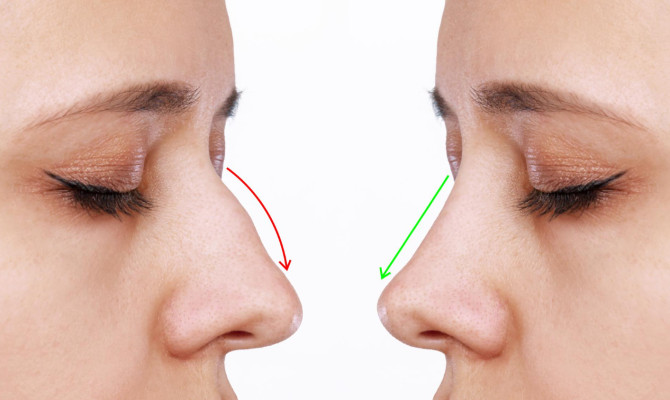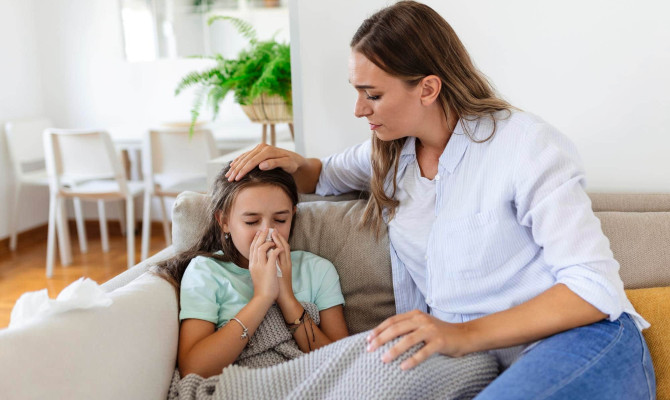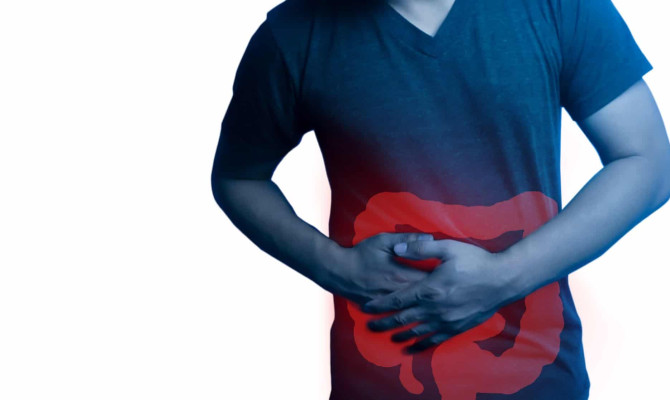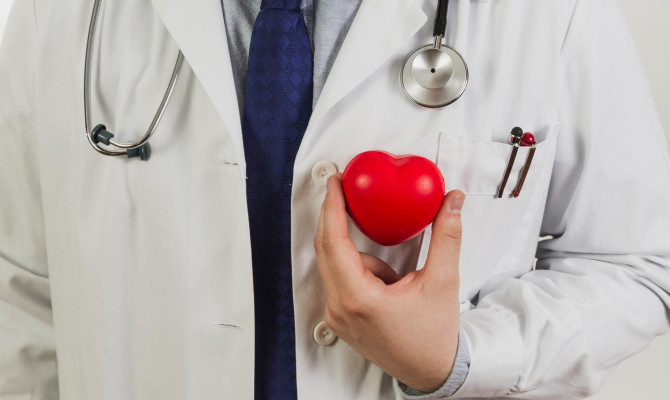Acute Lymphoblastic Leukemia and its management

- Acute Lymphoblastic Leukemia
- 14 Aug 2023
Overview
Introduction of ALL
Leukemia is a type of cancer of the blood and is identified by the quick development of abnormalities in blood cells. It starts in the bone marrow cells where the production of blood cells usually takes place. Normal cells become leukemic cells only after the cells go through a transformation. Compared to healthy blood cells, they live longer. The growth of the normal cells is eventually suppressed by the leukemia cells.
What is Acute Lymphoblastic Leukemia?
The most common type of blood cancer detected in acute lymphoblastic leukemia, commonly known as acute lymphocytic leukaemia or ALL. It contributes to around 30% of all childhood cancer cases and is the most often discovered cancer in children. Adults may also be affected. If left untreated, ALL will progress at an acute rate, meaning it will quickly get worse. Among all the child cancers, ALL has the best possibility of getting cured. Lymphocytes or white blood cells are responsible for detecting and eradicating foreign elements such as bacteria and viruses that are present in the body. When acute lymphoblastic leukemia affects the normal production of lymphocytes, resulting in too many immature versions of white blood cells, they are unable to fight infections. 1What is ALL?| Researched based study from Wiley.com

Types
What are the types?
ALL can affect either T lymphocytes (T- cells) or B lymphocytes (B-cells). Depending on the type of cells that are affected, ALL can be broad of the following types:
- B-cell ALL- the most prevalent subtype of ALLs, accounting for 75 percentage of all the cases of ALL in adults. These cells, which would typically mature into B-cell lymphocytes, start out as immature cells.
- T-cell ALL- This subtype is less frequent and affects more frequently in adults than in kids, accounting for roughly 25% of cases in adults. This subtype develops from immature cells that would typically mature into T-cell lymphocytes.
- Mixed type lineage- Leukemic cells occasionally exhibit both lymphocytic and myeloid characteristics in the same cell and this subtype could also be referred to as acute undifferentiated leukemia or mixed phenotypic acute leukemia. 2Types of ALL| Researched based study from Acarjournal.org
Symptoms
Symptoms of ALL
There are some common symptoms seen in patients with acute lymphoblastic leukemia, as follows:
- Fever
- Headache
- Pale skin
- Tiredness
- Dizziness
- Nausea
- Weight loss
- Lethargy
- Night sweats
- Feeling weak
- Loss of appetite
- Abdominal pain
- Enlarged lymph nodes
- Little red dots under your skin
As we all now know, in leukemia, there is a lack of normal blood cells. There may not be enough healthy platelets, white blood cells, or red blood cells. So based on the type of blood cells that are lacking, symptoms vary as follows:
- When the normal red blood cells are decreased, patient may show symptoms like general weakness, paleness of your skin and your mucosa, tiredness, breathlessness, etc.
- Lack of healthy white blood cells resulting in fevers that keep coming back, and persistent and recurrent infections.
- Platelets are lacking, the clotting mechanism in your body gets disturbed, resulting in easy bruising, and frequent and severe bleeding that does not stop easily.
As leukemic cells pass through your blood, they may reach places and cause problems at different sites in your body as follows:
- If leukemic cells reaches to lymph nodes, they cause swelling of lymph nodes.
- If it reaches the joints, patient may develop joint pain.
- If it reaches to the brain, may develop a severe headache, blurry vision, seizures, trouble balancing the body, etc.
- Patient may develop breathing difficulty. If it reaches to respiratory organs.
- Abdomen may swell abnormally if the leukemic cells cause swelling of patient’s liver or spleen.
Stages
Stages of ALL
Judging by the size of the tumor growth and the extensiveness of its spread, the majority of cancers are classified into stages. However, doctors, classify ALL into a few stages, in terms of the treatment,
- Untreated stage- in this stage, the patients may have taken treatment for the signs and symptoms like fever, abdominal pain, etc.The total blood count (CBC) is typically abnormal at this stage. Leukemic cells make up more than 5 percent of bone marrow cells.
- Stage of remission- To destroy as many cancer cells as possible, you underwent treatment. Your Complete blood count (CBC) is normal, and the percentage of cancer cells/leukemic cells in your bone marrow is less than 5. The patients may not be showing signs and symptoms of leukemia in this stage of remission.
- Stage of recurrence- Your cancer may have returned following treatment and remission, at this stage of ALL. and might reappear in any part of your body, mainly in your blood or bone marrow.
Risk
What are the risk factors?
Even though the cause of acute lymphoblastic leukemia is unknown, the following risk factors may contribute to the disease,
Genetic factors
- A person may have a higher risk of having ALL than other people, if they already have any of the genetic conditions like Downs syndrome, Klinefelter syndrome, ataxia telangiectasia etc.
- Cancer may also spread more quickly in young people who have specific chromosomal abnormalities that stop DNA from repairing itself.
Prenatal tobacco exposure
- Several studies suggest that smoking during pregnancy or exposure to tobacco smoke during the first few years of the baby’s life may put the baby at a higher risk of having ALL.
Racial factor
- Relative to other races, white people have a greater likelihood of developing ALL. 9Risk factors of ALL | Researched based study from nih.gov
Age
- The most vulnerable groups to ALL are kids and elderly people. Kids under the age of 15 and senior individuals over the age of 60 are shown to be more affected by ALL.
Secondhand tobacco exposure in children
- The risk of getting ALL was increased in kids who were exposed to secondhand smoke. 3Risk of ALL | Researched based study from Biomedcentral.com
High doses of radiation
- High radiation exposure like in atomic bomb survivors may increase the risk of developing ALL.
- The risk may be increased by high radiation exposure, such as that experienced by survivors of an atomic explosion.
Viruses
- ALL can occasionally develop in individuals who have previously experienced viral infections like the Epstein-Barr virus or human T-cell leukemia virus. 6Risk factors of ALL| Researched based study from nih.gov
History of cancer treatment
- ALL development may be more likely in those who have undergone radiation and chemotherapy for some other type of cancer in the past.
Leukemia in children
According to statistics, 28% of all cases of juvenile cancer are leukemia. 4Risk factors of ALL | Researched based study from Cancer.org The most typical form of cancer in teens and kids under 20 is this one. Kids younger than five have the greatest risk of ALL. The risk again increases as an individual grows older than 60 years. 5Risk factors of ALL | Researched based study from Cancer.gov If not managed, juvenile, ALL, rapidly deteriorates. Kids with ALL may display signs like frequent infections, fever, and easy bleeding.
Diagnosis
How is it diagnosed?
Diagnosis of ALL just by sticking to the associated symptoms might not be possible. So, here are a few tests to be taken:
Blood test
- Obtaining a complete blood count (CBC) will reveal how many of each kind of blood cell you have.
- Afterward, a peripheral blood smear is conducted to look for any alterations in the blood cells appearance.
- Blood tests may also be used to evaluate the condition of your liver and kidneys.
Bone marrow aspiration & biopsy
- Doctor will examine the blood sample to look for leukemic cells and sort the blood cells according to their size, shape, and other molecular and genetic traits.
- To identify whether the cancer cells originated from B or T lymphocytes, researchers also examine the cancer cells for specific alterations.
Lumbar puncture
- Popularly called spinal taps, this procedure requires placing a needle between the vertebrae of your lower back to remove the fluid that surrounds the brain and spinal cord.
- This could be useful in determining whether cancer has spread to the brain, spinal cord, or any other organs in your body.
Imaging tests
- Your doctor can determine whether cancer has spread with the help of imaging tests like X-rays, Computed tomography (CT or CAT) scans, magnetic resonance imaging (MRI), positron emission tomography (PET) or PET-CT scans, or ultrasounds.
Other methods
Your doctor may examine your blood or bone marrow to look for specific chromosomal changes that affect genes, proteins, and other components that are unique to leukemia.
Complications
What are the complications?
Among ALL survivors the risk of,
- Obesity and metabolic conditions
- Diabetes type 2
- Tumor lysis syndrome
- Hyperuricemia
- Elevated potassium and phosphate
- Low calcium
- Renal failure
- Swollen Liver, spleen and lymph nodes 7Complications | Researched based study from nih.gov
- Damage to cranial nerves
- High cranial pressure 8Complications | Researched based study from nih.gov
Treatment

Treatment methods
Acute lymphoblastic leukemia treatment typically starts by taking care of your symptoms, like bleeding, infections, or fever. The majority of the following will also be a part of your treatment:
Chemotherapy
- A combination of medicines can be administered through your mouth in the form of tablets, intravenously, or intramuscularly or, topically over your skin, and sometimes, even intrathecally that is in spinal cord, that can help destroy your cancer cells or delay them from growing.
Antibiotics
- They are frequently used to either prevent or treat infections in ALL patients.
Blood transfusions
- Anemia brought on by chemotherapy, can sometimes demand transfusions. Patients who are unable to produce their blood cells benefit from blood transfusions.
Radiation therapy
- Radiation kills or shrinks cancer cells by utilizing high energy radiations, such as X-rays.
Bone marrow transplant or stem cell therapy
- Used to treat ALL that has not improved after chemo therapy or that has shown to have a high risk or relapse. This involves obtaining healthy stem cells from a patient’s own body or a cancer-free donor and injecting them into the patient through an intravenous line to produce normal blood-forming cells.
Targeted therapy
Compared to chemotherapy, some medications tend to have fewer side effects since they only target particular parts of the cancer cells. For example:
- Nilotinib, dasatinib, bosutinib, etc.
- Immunotherapy using ozogamicin, blinatumomab, inotuzumab.
- CAR T-cell therapy- CAR T-cell therapy is a type of therapy that has been allowed by the FDA. It treats your cancer by using a part of your immune system known as T cells.
- Clinical trial- to test out new therapies that are not yet generally available to everyone, you can also think about enrolling in clinical trials.
Prognosis
Prognosis of ALL
Only about 30% of adults with ALL can be cured. 10prognosis of ALL| Researched based study from nih.gov However, the prognosis of this disease depends on various factors,
- Your chromosomes – Philadelphia chromosome-free individuals typically do far better than the ones with it.
- The findings of your tests – If your diagnosis is made while your white blood cell count is lower, your prognosis is better.
- Age – Patients under 30 years old recover more quickly than patients over 60 years old.
- Your body’s response to treatment – If you show no signs of leukemia 4 to 5 weeks after commencing treatment, your prognosis is better.
- Your follow-ups – which you must take for several years following treatment to ensure cancer has not returned and to assess your general health. Regular follow-ups increase your prognosis.
- Your emotional strength – It’s normal to feel anxious after receiving a cancer diagnosis. You need to be positive and strong throughout your treatment. For assistance and support, get in touch with family, friends, a psychological counselor, or local or online support groups.
Outlook
Outlook
The National Cancer Institute reports that 65.7 percent of patients live for five years or more after receiving a diagnosis of the disease, demonstrating the effectiveness of these measures. As the symptoms of leukemia are generally confusing and non-specific to the disease, many people do not realize that they have cancer without receiving a diagnosis. So many patients claim to have assumed that their age, a common sickness, or a hectic lifestyle was to blame for their symptoms. Every situation Is different and every patient has a different set of symptoms. the likelihood of surviving ALL are affected by many variables, such as age, type, stage of the disease, and how well your body responds to the treatment you receive. With the use of treatments like chemotherapy, radiation therapy, and stem cell therapy, it is feasible to treat cancer and stop it from coming back.
Any feedback on this article?
 This Articles content was accurate
This Articles content was accurate Very Informative Article
Very Informative Article I have a question or a comment
I have a question or a comment
 This article contains inaccurate content
This article contains inaccurate content This article was not helpful
This article was not helpful I have a question or a comment
I have a question or a comment
We appreciate your helpful feedback!
Checkout our social pages
References
-
Wiley Online Library
Cancer statistics | Overview
-
American Association for Cancer Research
Correlates of Prenatal and Early-Life Tobacco Smoke Exposure and Frequency of Common Gene Deletions in Childhood Acute Lymphoblastic Leukemia | Types
-
BioMed Central
RAS mutations in early age leukaemia modulated by NQO1 rs1800566 (C609T) are associated with second-hand smoking exposures
-
American Cancer Society
Types of Cancer that Develop in Children | Causes
-
National Cancer Institute
Cancer Stat Facts: Leukemia | Causes
-
National Institutes of Health
Changes in body mass index, height, and weight in children during and after therapy for acute lymphoblastic leukemia |
-
National Institutes of Health
Early complications in children with acute lymphoblastic leukemia presenting with hyperleukocytosis | Complications
-
National Institutes of Health
Pictorial essay: Acute neurological complications in children with acute lymphoblastic leukemia | Complications
-
National Institutes of Health
Acute Lymphocytic Leukemia | Risk Factors
-
National Institutes of Health
Acute Lymphocytic Leukemia | Prognosis




































